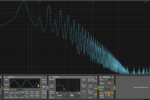Your Secret Weapon in Music Production: Silence

Silence is golden, and it can also be the key to a more professional sounding track
Making music is a creative process, but sometimes as producers we can get too fixated on the actual act of creation itself. Recording or adding in elements to build out a track is fun, but there’s always a tipping point where too many sounds will start to work against the overall balance of your mix, and you may be better served taking things out instead.
The idea of silence is something that you should embrace in your productions, and it’s just as important as the kick, bass, synths or any of the other sounds you’ve assembled.
Silence can be used to create contrast, focus the listener’s ear, and build and release tension, and in this article we’ll show you how it’s done.
You can see how Ramin Rezaie carefully deploys beats of silence in his Track from Scratch course to help to progress an arrangement.
Silence before a chorus
In songwriting and arrangement, the chorus is typically thought of as the “big” part of the track. It’s the payload, the part that the audience sings, and the reason why they’ll sit through meandering verses or protracted intros.
There are all sorts of ways of emphasising the size of a chorus, for example widening the stereo image or extending the range of the melodies used. By reducing the size of what comes before it though, you can enhance its impact further, and this is where silence can be very helpful.
In Foo Fighters’ “All My Life” the drums and bass cut out for two bars just before the chorus at 1.15 seconds, leaving Dave Grohl’s whispered vocals over a palm muted guitar riff. The introduction of this silence, coupled with the reduction in intensity of what’s left, creates the sensation that the track is being pulled into a vacuum, only for it to explode into the raucous chorus seconds later.
Silence before a drop
A few beats of silence just before the drop kicks in can be a great way of delaying gratification on dancefloors. People know what’s coming, so the absence of elements in a track presents the space for the drop to fill. Mute instrument tracks in a portion of the very end of the build-up or a sliver of the very beginning of the following part, or even add a full bar of silence between the build-up and the drop to create this space.
It’s up to you how far you want to go with this, some producers mute everything except a drum fill, leave in a bass boom, or even mute everything. The aptly named “Silence” by Marshmello ft Khalid, everything in the track bar the vocal cuts out at 1:09, leaving a big gap for the rest of the instrumentation to kick in with the hook.
Silence between notes
The legendary blues guitar player B.B. King once said “Notes are expensive, spend them wisely.” When people think of advanced musicianship they’ll often picture blazing speed and technical acumen, but more often than not an overabundance of notes will get in the way. Truly memorable and emotive musical ideas are best expressed simply, with space between notes.
Miles Davis, another iconic musician who liked to reside in the space between, illustrates this perfectly in his track “So What” from the iconic 1959 album Kind of Blue. The main trumpet melody essentially revolves around two notes, with a lengthy silence in between to let them breathe. Next time you write a melody, be conscious of what can be achieved with a “less is more” approach.
Silence in the mix
Sometimes, the arrangement of a song can dictate the way it should be produced. For example, a simple acoustic ballad will usually warrant a simple mix, which will allow the essence of the song to be displayed. However, some producers take tracks that could potentially be “bigger” and deconstruct them into more minimal mixes. By doing this, you allow a greater dynamic range, and the potential of dramatic moments that might otherwise have been lost in busy mixes.
An excellent example of this is Billie Eilish’s track “when the party’s over”, a searingly emotional track that rotates around a softly sung vocal. Finneas, the producer of the song, shows total respect to the vocal performance by creating a sparse mix, with no drums, only occasional moments of bass, and predominantly textural accompaniment.
Complete silence
While most of the examples used so far have involved muting certain instruments or elements of a track, or employing silence in a single instrument line, there is also the possibility of using total silence as an interruption. Cutting out absolutely every element of the track and leaving nothing but dead air at unexpected moments can be a unique way of toying with the audience.
For example, in J.Dilla’s track “Stop” he leaves a very short moment of complete silence at 0.58. It’s so brief, in fact, that you might think your headphones have cut out for a second! This works well because it links with the lyric, although we don’t expect it as a listener because it hasn’t happened previously in the track.









